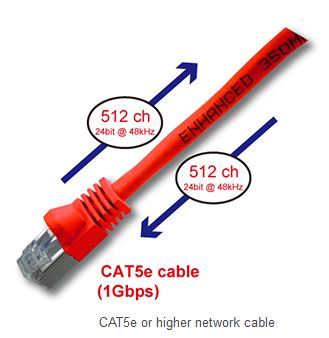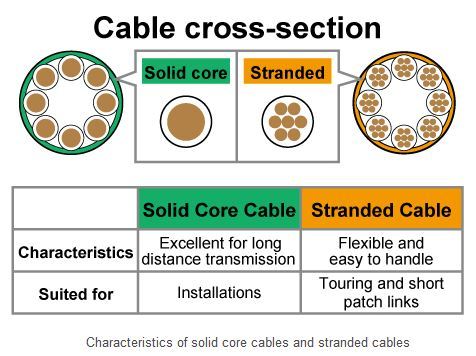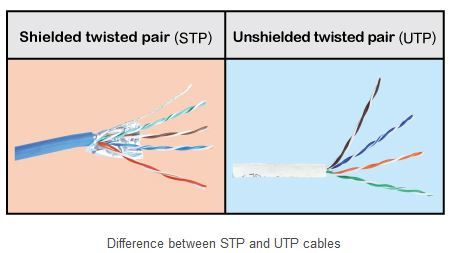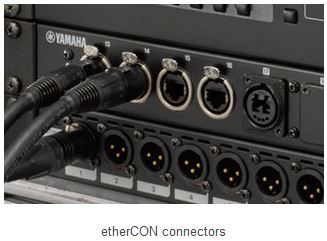Selecting Network Devices
Selecting Cables
All the Dante devices produced by Yamaha are designed to be used with gigabit transmission (1000BASE-T), so be sure to use a CAT5e or higher network cable (you can use CAT6 and CAT7 cables as necessary). To prevent electromagnetic interference, only use CAT7 cables with the Dante Accelerator card (AIC128-D), as they have more effective shielding.

According to their specifications, CAT5e or higher cables can transmit data up to 100 m, but the actual potential transmission distance varies depending on factors such as the cable quality, the termination quality, and the environment in which the cable is used. Be sure to check the specifications provided by the cable manufacturer. Also, especially when installing connectors yourself, it’s important to note that when termination is not accurate, a cable will be unable to achieve its maximum transmission performance. If you are unsure of the long-distance transmission performance of a cable, you can use a cable checker to see whether the cable conforms to CAT5e (TIA/EIA-568-B). In addition to the categories discussed above, cables can be categorized into solid core cables and stranded cables according to the structure of the conductors within the cables. In a solid core cable, each of the eight conductors consists of a single copper wire, so solid core cables have better transmission performance over long distances than stranded cables. In a stranded cable, each conductor consists of stranded multiple copper wires, so stranded cables are more flexible and easier to handle than solid core cables. Therefore, in general, solid core cables are suited for installations, while stranded cables are suited for touring and short patch links. However, don’t expect all rugged CAT5e or CAT6 cables to provide stable 1Gbps performance at 100m lengths. If your touring cable needs to be longer than 70m, use either a rugged solid-core cable or fiber-optic cables for more stable performance.

To prevent electromagnetic interference, use STP (shielded twisted pair) cables. Unlike ordinary UTP cables, STP cables have shielding that reduces the radiation of noise. Because STP cables have to be grounded, it’s also necessary to use connectors that are compatible with STP cables.

As for the connectors, in addition to the usual RJ45, many devices are also compatible with the rugged etherCON connector. etherCON connectors use a locking mechanism which makes it difficult for the cable to be pulled out, and are useful for applications where the cable needs to be both pulled in and out frequently but also firmly locked in place, such as during live performance.







